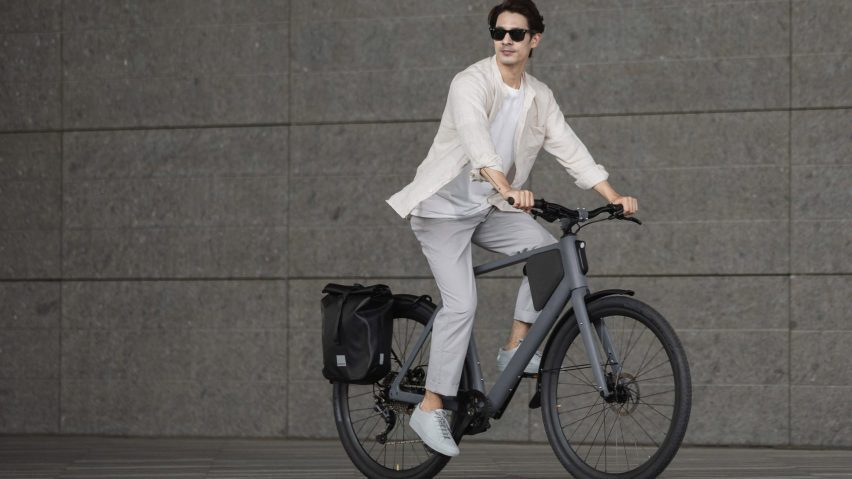
Lemmo One bicycle transforms from analogue to electric with a simple attachment
Mobility design studio Springtime Design aimed to avoid some of the pitfalls of e-bikes when developing this two-in-one bicycle for German manufacturer Lemmo.
Lemmo One is both an electric bike and a conventional mechanical bike, with the conversion achieved via a removable battery pack that attaches to the frame and a hub motor on the back wheel that can be disengaged so as not to block normal pedalling.
Users only need to slide the battery pack into its slot under the top bar of the frame to activate e-bike mode.
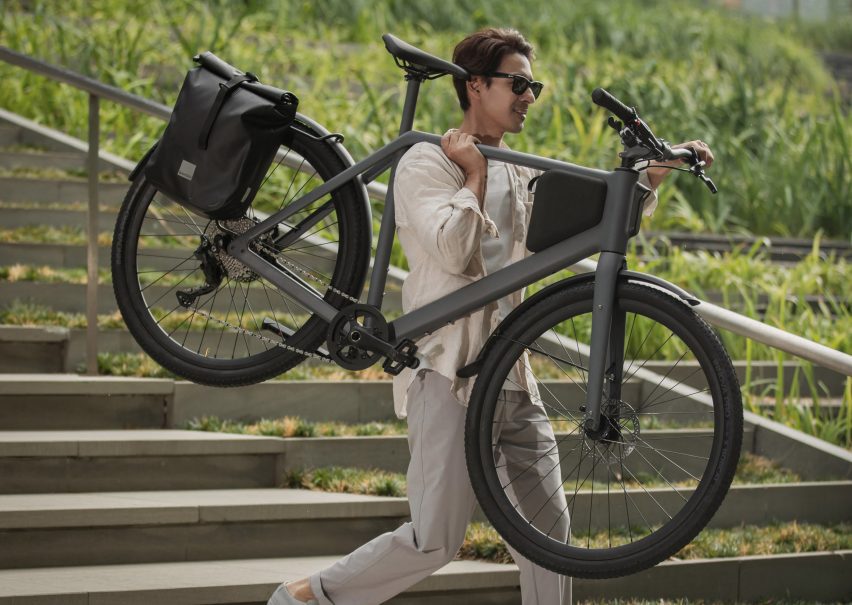
Lemmo One gives users two different cycling options – depending on whether ease or exercise is the priority – as well as addressing a common problem with e-bikes: their more frequent need for repair.
While the lifespan of a pedal bike is typically 15 years, according to Springtime Design, it is currently much shorter for e-bikes. Estimates in online e-bike publications tend to put the figure between three to ten years.
With the Lemmo One, nearly all of the electronic components are housed in the detachable battery pack, which Lemmo calls the Smartpac. This way, the pack can be easily sent away for repairs and even be upgraded every few years, extending the vehicle's lifespan.
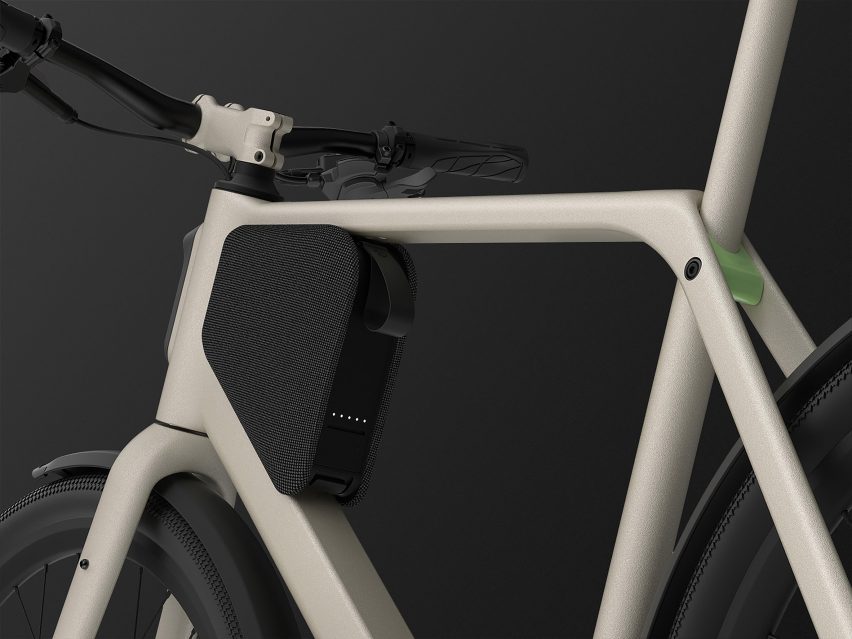
The innovations were developed by German start-up Lemmo, which brought Springtime Design on board to develop the overall design concept and detailing of the bike. The studio also had to define the location of the Smartpac in the frame and develop its industrial design, UX and UI.
"The main challenge really was to make the Smartpac have a logical role in the bike, and to ensure the bike makes sense with and without it," Springtime managing partner John Kock told Dezeen. "And I think we succeeded in that."
"The bike looks and rides great both as a commuter e-bike and as a sporty pedal bike."
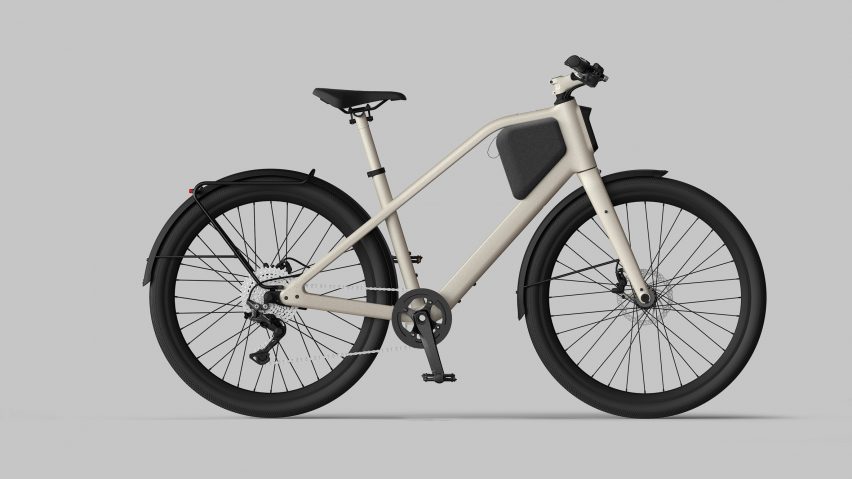
The only electric component that cannot be removed from the bike is the 250-watt hub motor, which Lemmo calls the Dual Mode Hub because it can switch between two modes.
When the mechanical clutch is applied, the motor disconnects from the drivetrain so as not to cause resistance as the rider pedals.
"If you want to be able to ride the bike as a regular pedal bike, you don't want any friction caused by the hub motor," explained Kock.
"A hub motor that is not powered always gives more resistance than a pedal bike hub," he added. "By physically decoupling the motor from the axis, this resistance is taken away."
Without the three-kilogram Smartpac, the Lemmo One weighs 15 kilograms, making it much lighter than the average e-bike and similar to a conventional road bike.
The bike has a powder-coated aluminium frame with a carbon fork. It is made using a no-welding technique, creating an overall smooth look.
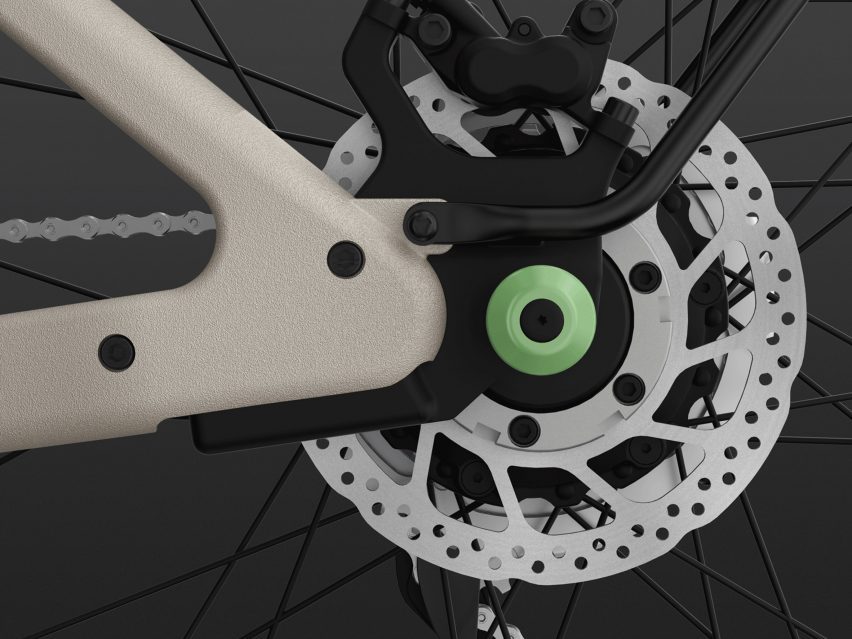
Kock considers Lemmo One "a very serious step in the right direction" after the bankruptcy of leading e-bike manufacturer VanMoof put the vehicles under the spotlight in recent months.
He says that while "VanMoof did a great thing for the bike industry, becoming the new benchmark", the company was hampered by developing most of its components in-house to achieve a "unique" integrated design.
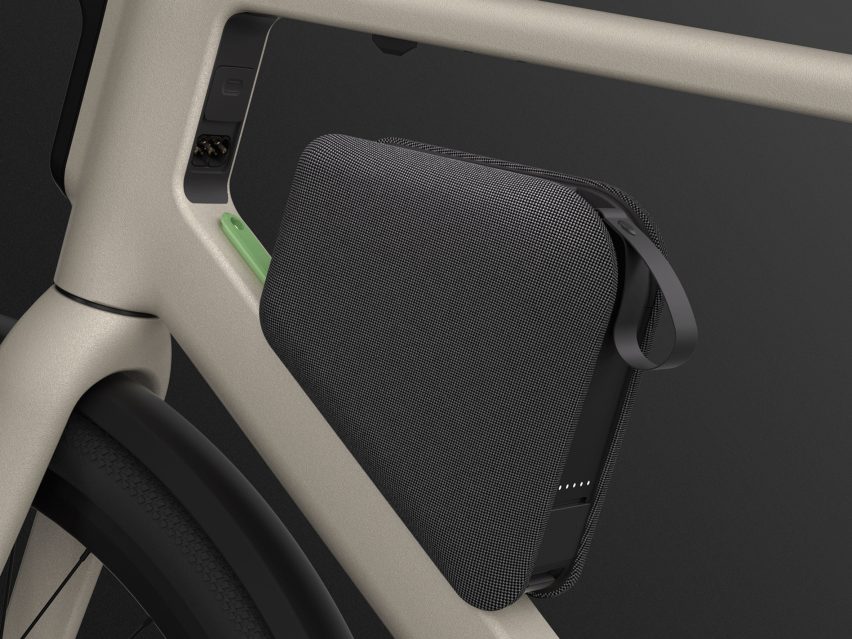
"The disadvantage of this is that every single component had to be developed from scratch and some came with some initial flaws," said Kock.
"Multiply that with fantastic sales numbers and a service organisation that can't keep up, and then there is a problem. Because of their high level of integration and customisation, only VanMoof can fix a VanMoof."
He said Lemmo had decided to take a different route, using more trusted third-party components and making the Smartpac detachable for easy repair and replacement.
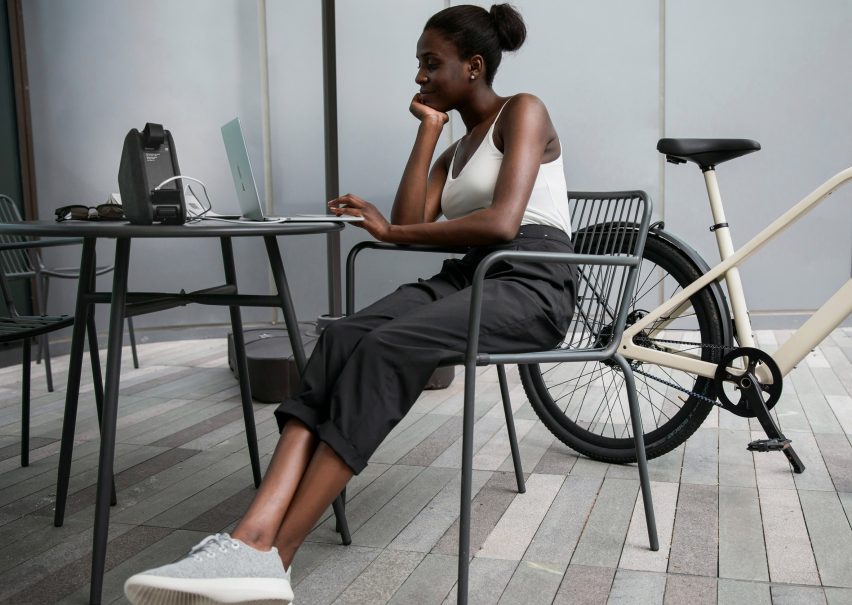
"But obviously also Lemmo has the obligation to carefully build up a proper service organisation to support their growing customer base," he added.
Lemmo launched the Lemmo One in its native Germany earlier this year and has since expanded to France and the Netherlands.
The design has been longlisted in the product design category of the 2023 Dezeen Awards, alongside Samsung's Galaxy Z Flip smartphone and an upright piano designed by Lorenzo Palmeri Studio.
Images courtesy of Lemmo.